
AFter a couple of years of lobbying, Lise Balthazar realizes her dream – holding the first Snow Bunting banded at her place. -N. Capitanio
On the weekend I travelled up to Lanark County to try and catch Lise Balthazar’s SNBU’s. Ever since the first X-country SNBU Checkup was posted on this blog, she has been after me to try and find a bander to mark them. It has been her dream. She has lots of snow and a good crop of buntings that she has maintained year after year with multiple feeders but it was difficult to catch any on the Saturday for a number of reasons: a) she has 17 feeders AND she puts out feed for the deer and turkeys so the buntings would go to the other seed sources rather than chance the traps. Prior to coming I had suggested that she concentrate the feed into 5 distinct piles (I was bringing 5 traps) and she did but there was so much “residue” that the birds were avoiding the trap area. b) the habitat consists of trees and shrubs surrounding a small open area plus the house and out buildings. I’ve found that in these situations the flocks are really “flighty” – like shorebirds actually. They fly in and drop on the food, peck away quickly getting as much as they can, and then fly up within seconds of alighting. I’ve seen this in a number of areas with similar habitats. The reason I think is that the buntings are very wary of avian predators that can use the trees/shrubs/buildings as screens to approach within easy striking distance of the Snow Buntings. In wide-open habitats, like our Duxbury Road banding site near Hagersville, the birds are much more “relaxed” and will take the time necessary to check out the traps and then go after the food. They can see danger coming a long way off. c) Lise feeds deer with a corn/oats/barley mixture (“COB”)that she puts out in 3 large plastic basins – right in the middle of the best (i.e., most open) SNBU catching area. Although the birds seem somewhat habituated to the deer, the deer’s movements (and there can be up to 20+ of them) keep the birds on edge…..and “flighty”.
Sunday was a different story: a day-long blizzard started early in the morning and quickly (and effectively) covered all other food sources on the ground so that the food in the traps was the only thing available – we had to keep uncovering the bait inside the traps to keep it visible. Plus Lise did not put out the 3 plastic basins for the deer. The result was that the hungry birds had to negotiate the traps in order to feed and very quickly found their way into them (once we had scared off a Northern Shrike that was on the top of a trap as soon as we had caught the first one).
In 3 1/2 hours we caught and banded 89 birds!! The age/sex mix was interesting: 87 were males – 39 SY, 48 ASY. The 2 females were 1 ASY and 1 SY.
I was joined in this effort by a young student from the Montreal area, Catherine Lavallee-Chouinard. She came with some prior banding experience at Thunder Cape. She was both enthusiastic and, learning quickly, effective. She banded about half of the birds.
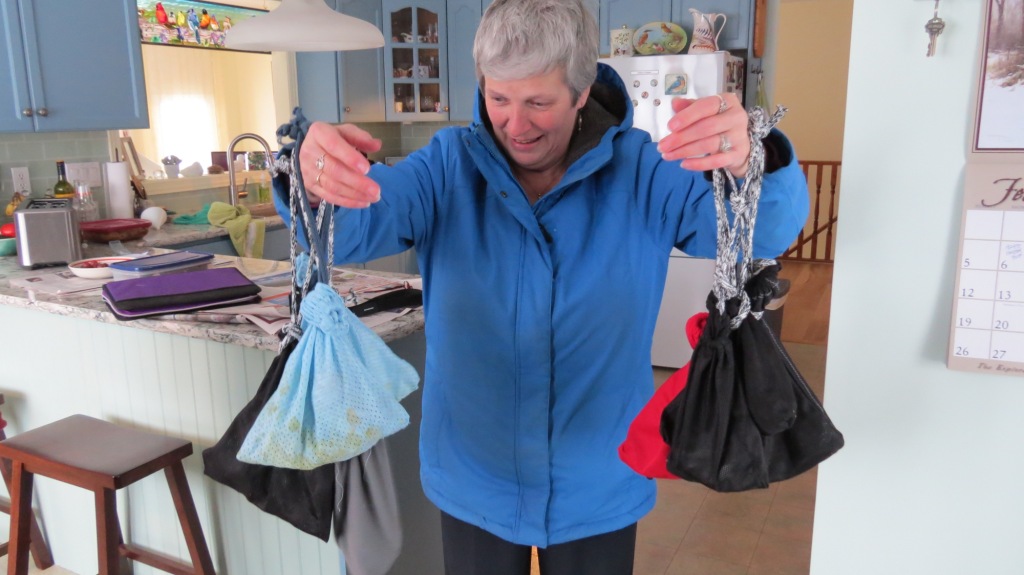
Lise with another haul (we moved the banding operation into the kitchen to keep warm – the birds, however, were kept out on the porch so they wouldn’t overheat). -N. Capitanio
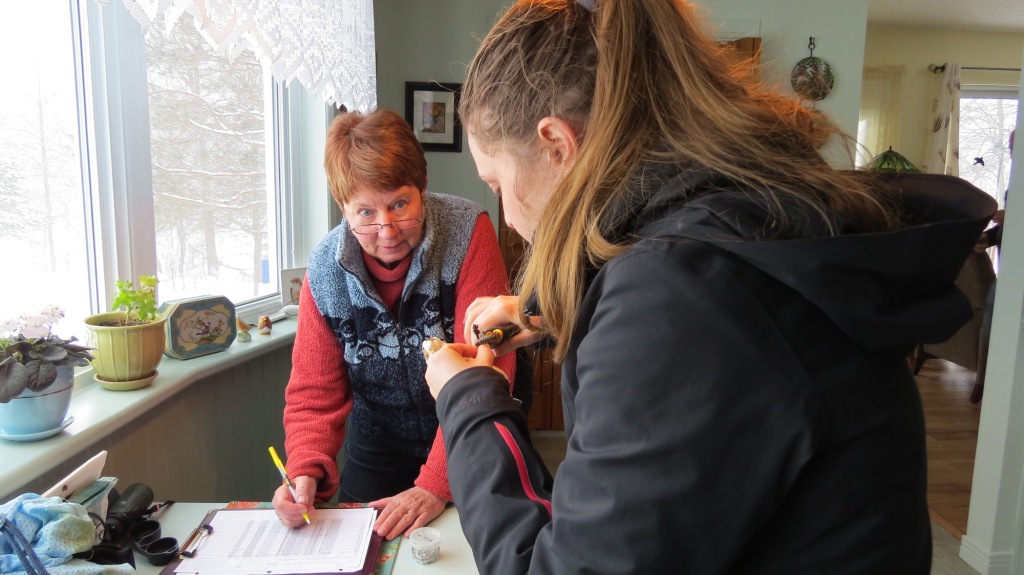
A good scribe is hard to find – Marg doing the honours with Catherine in Lise’s kitchen…….I was probably eating muffins by this point. -N. Capitanio
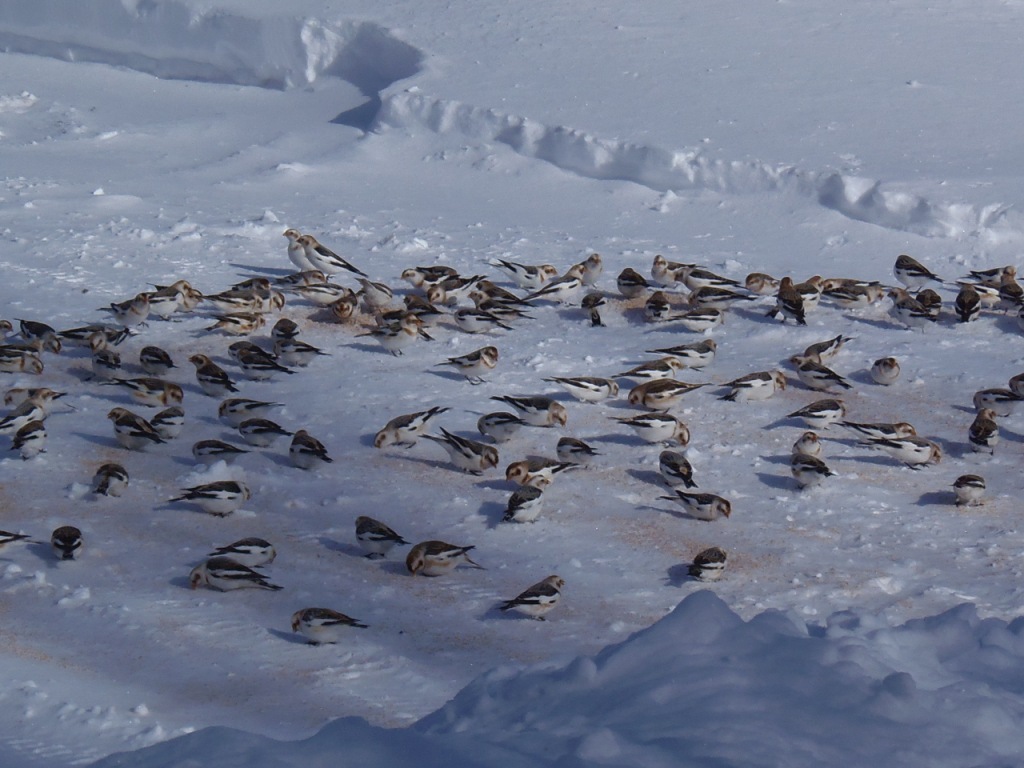
The big flock of (mostly) male Snow Buntings hungrily attacks the piles of millet on Monday morning after the blizzard. -N. Capitanio
Just prior to driving up to Lanark I checked out our banding site on Duxbury Road just outside Hagersville. There was barely any snow on the ground. Doug Ward, a Hamilton Photography Club member came out to try his luck and Nancy was able to chase up the remnants of our Snow Bunting flock as well as a few Horned Larks:
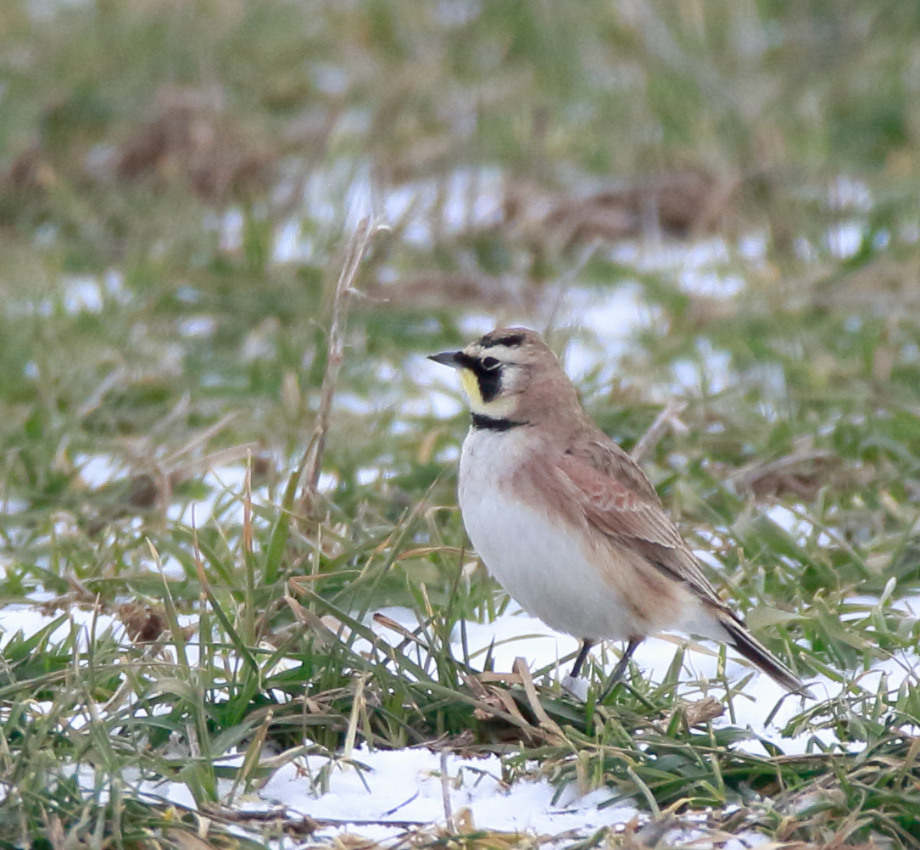
Often mixed in with Snow Buntings, Horned Larks are always a treat. They begin to move through the area in good numbers in Mid-February. -D. Ward
And out near Camp Morton in Manitoba Bill Maciejko finally was able to get some help with his flock: Emily MacKinnon.
Unless there’s a drastic change in the weather in southern Ontario – snow and freezing temperatures – I’m afraid that our Snow Bunting season will be over. The birds will be shifting northward toward their breeding ground, getting ready for the big push in a month or so.
Rick

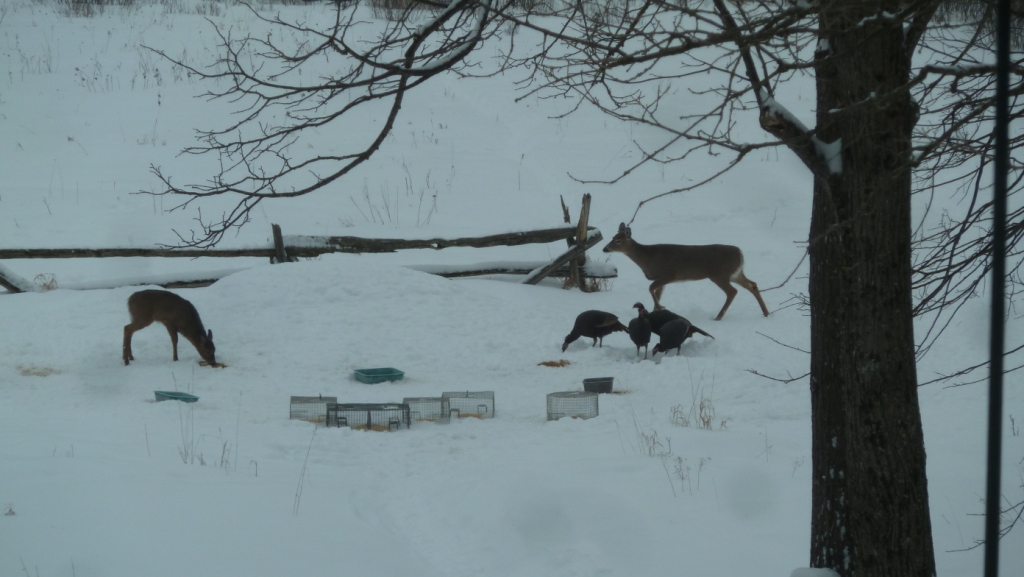
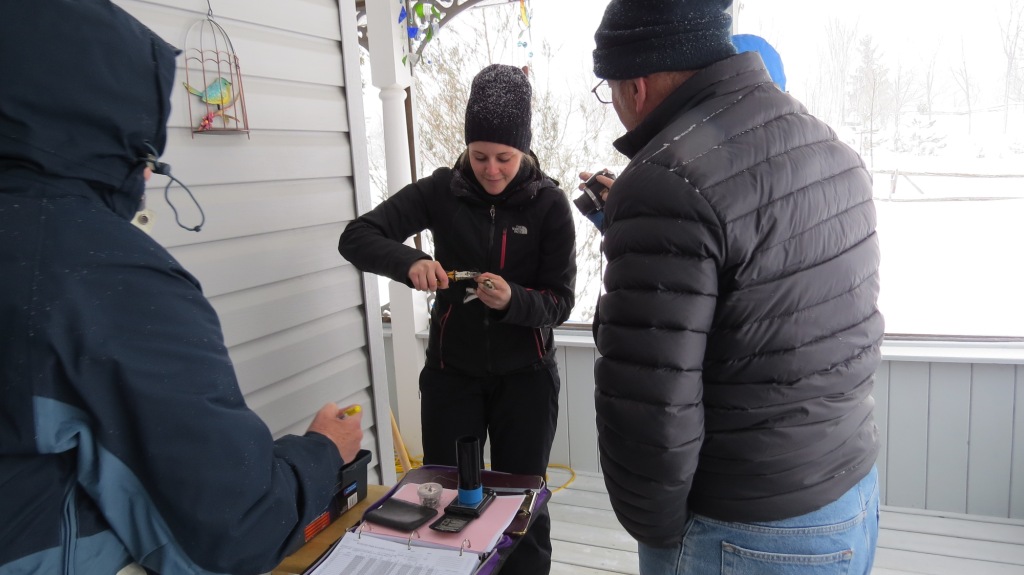
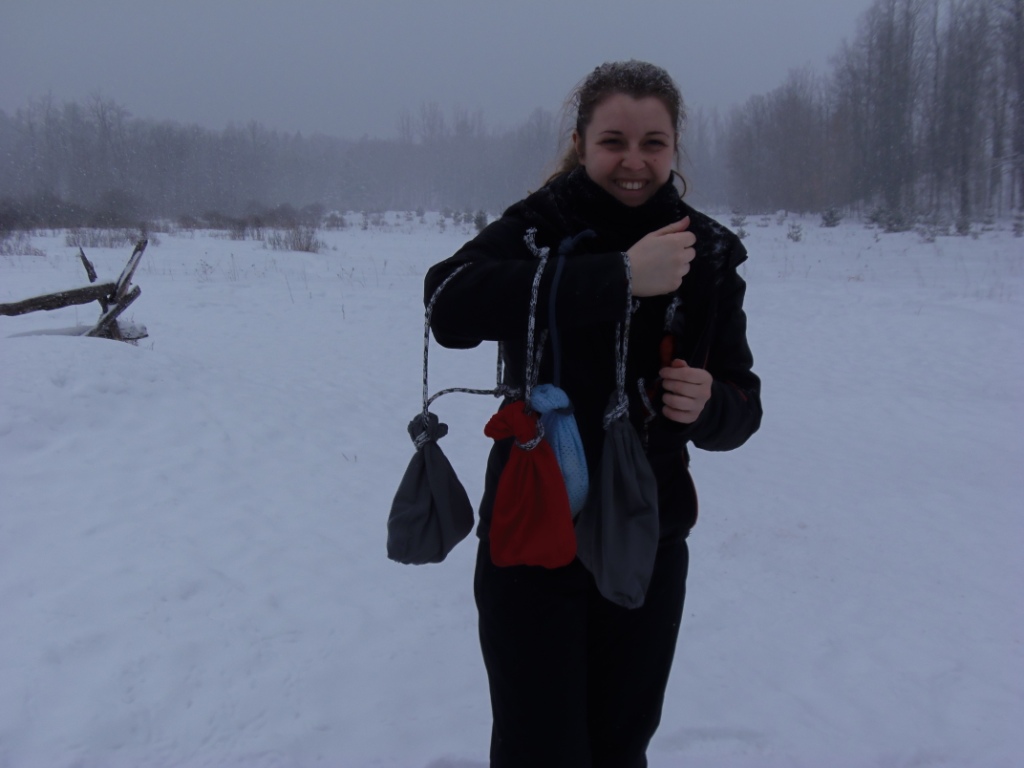
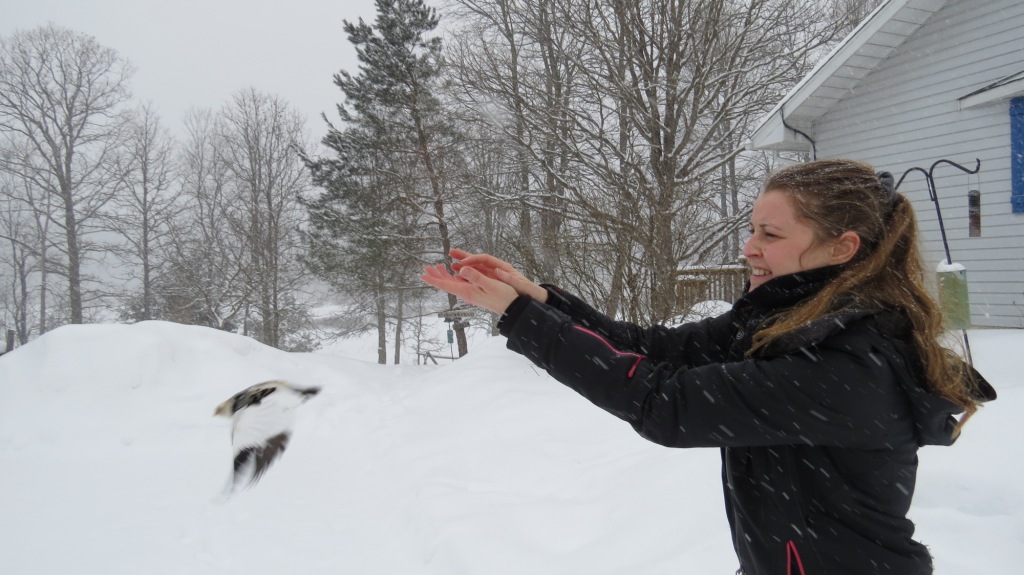
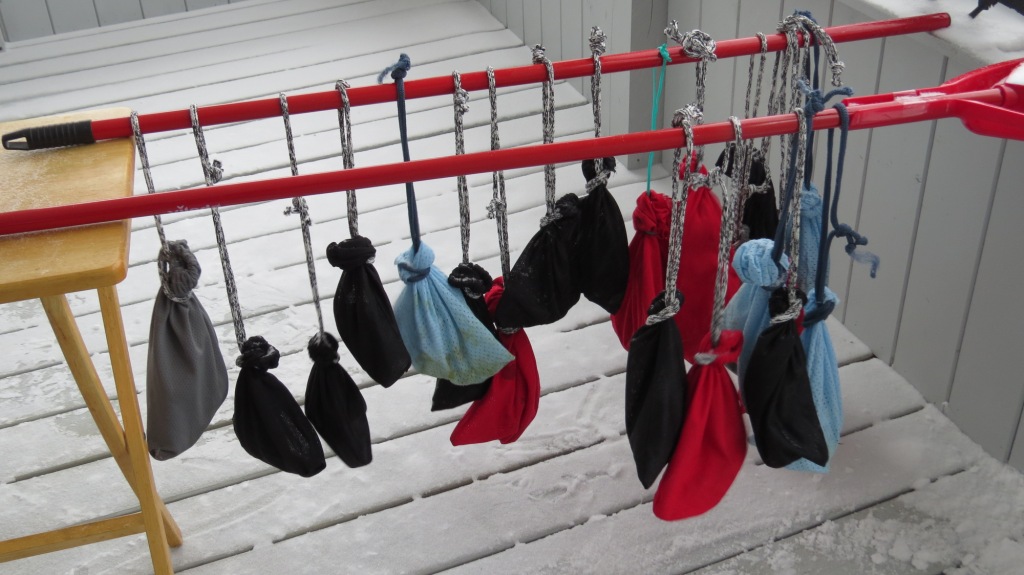
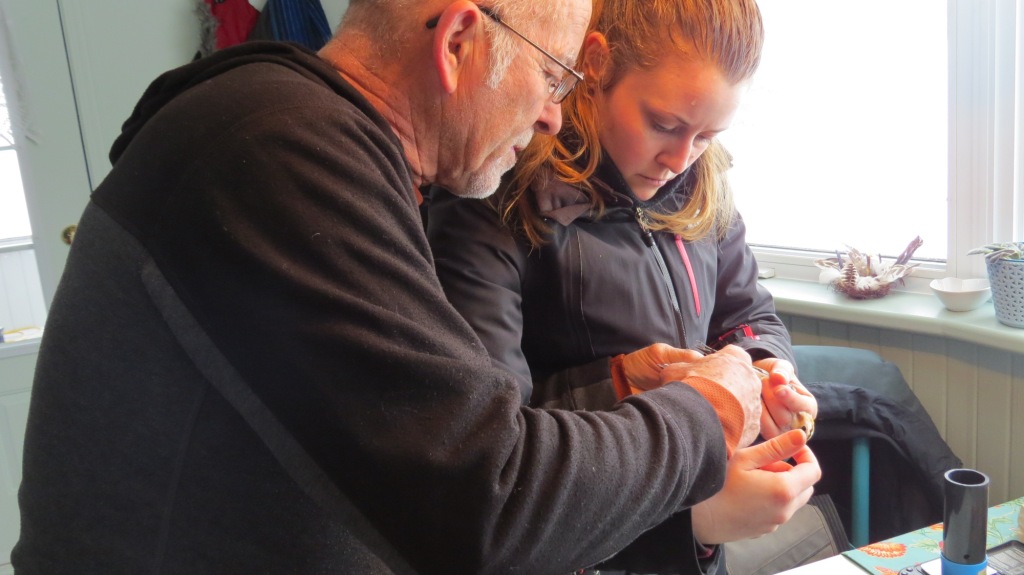

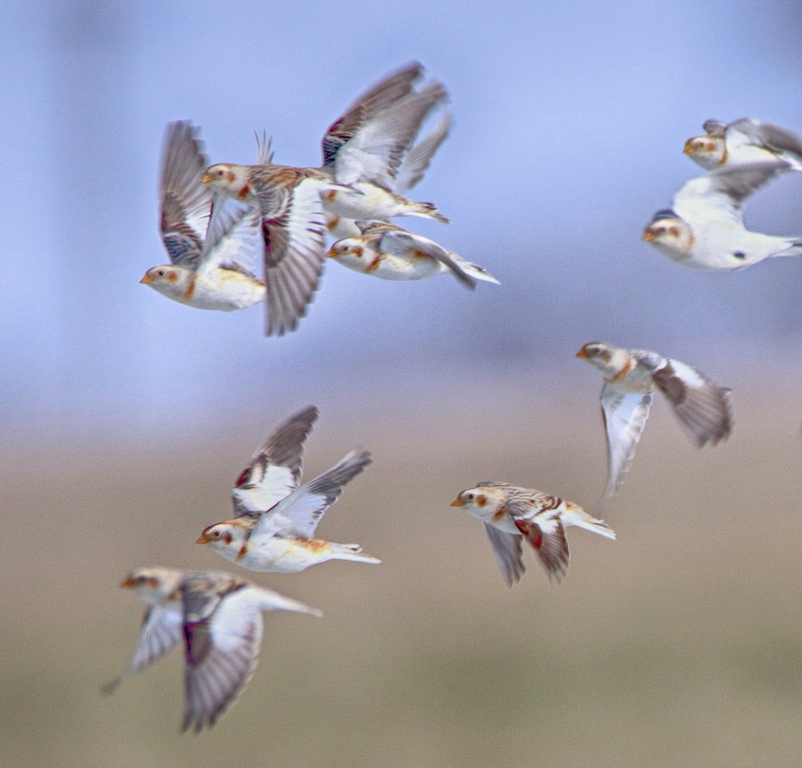
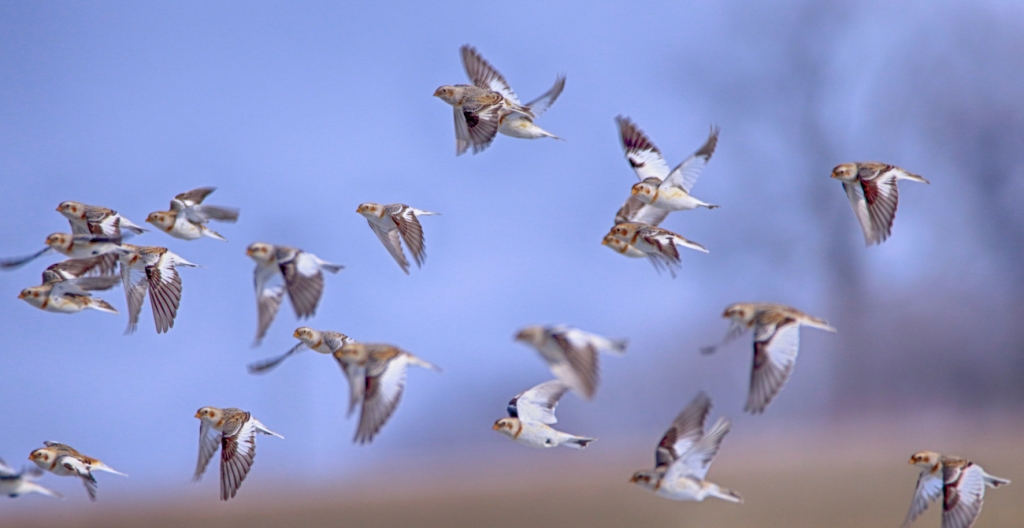
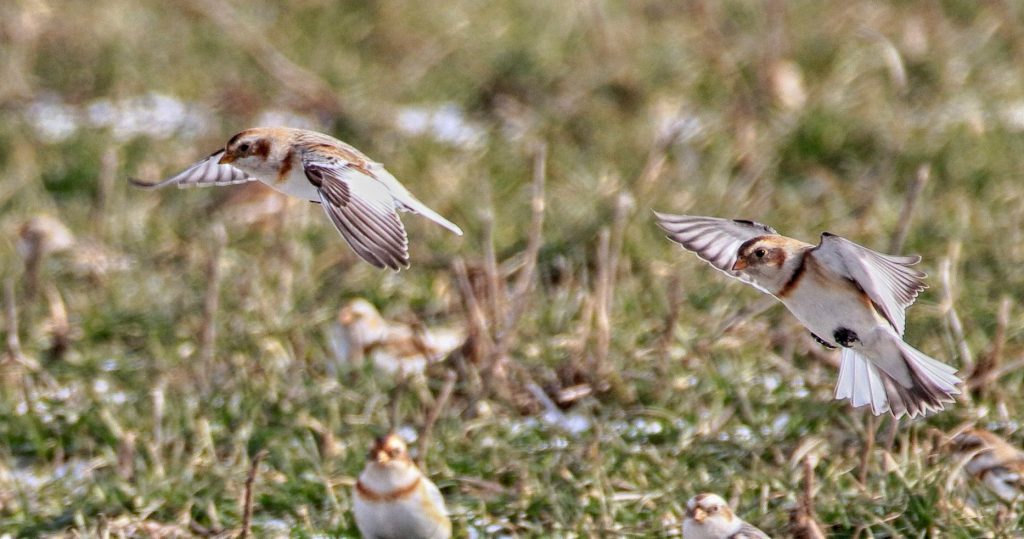
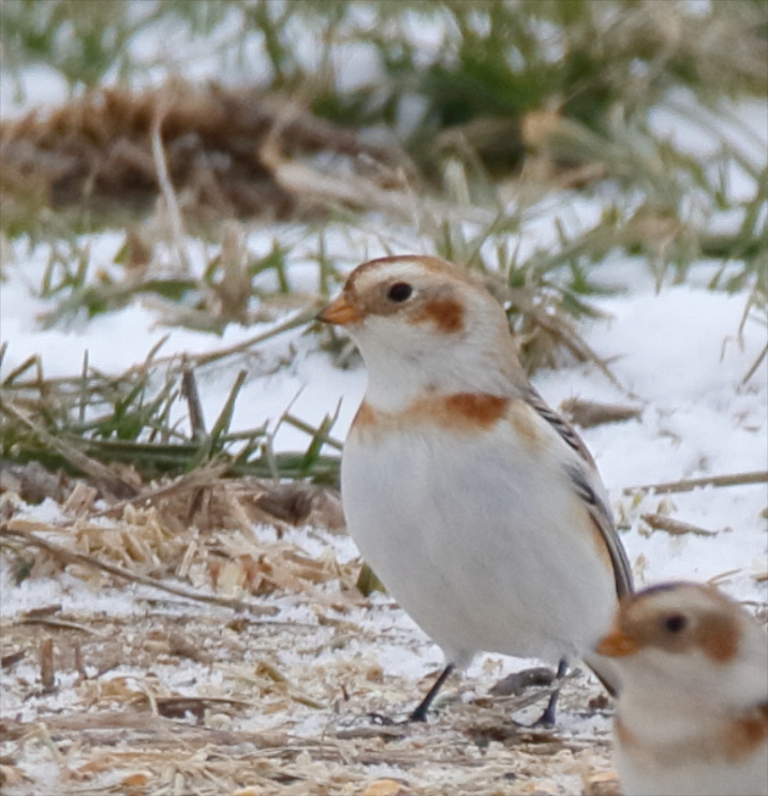
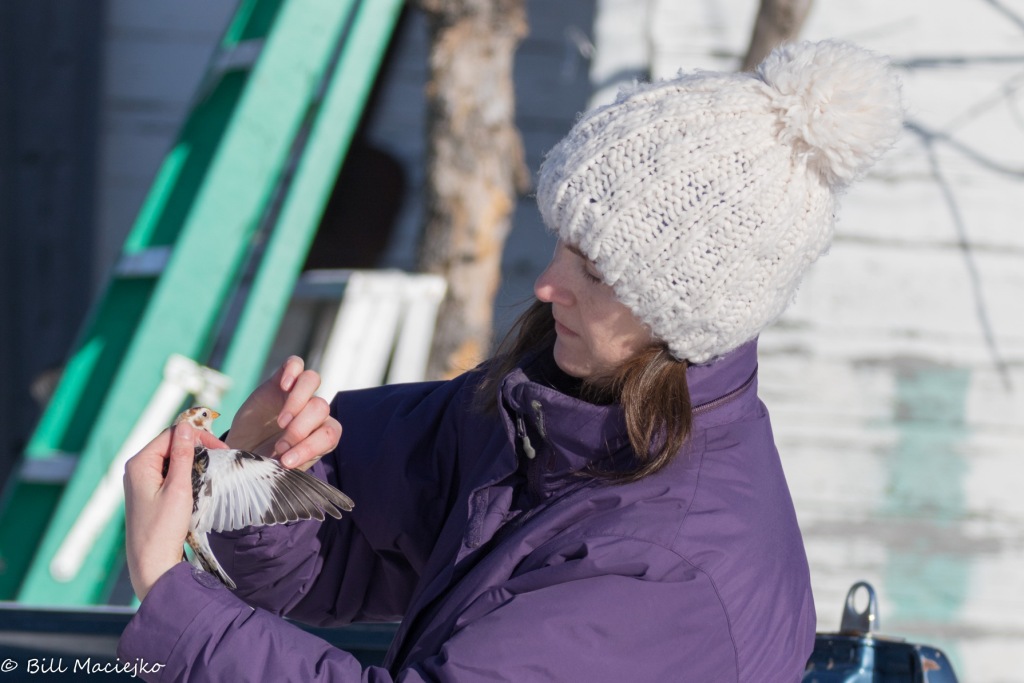
Great Story!